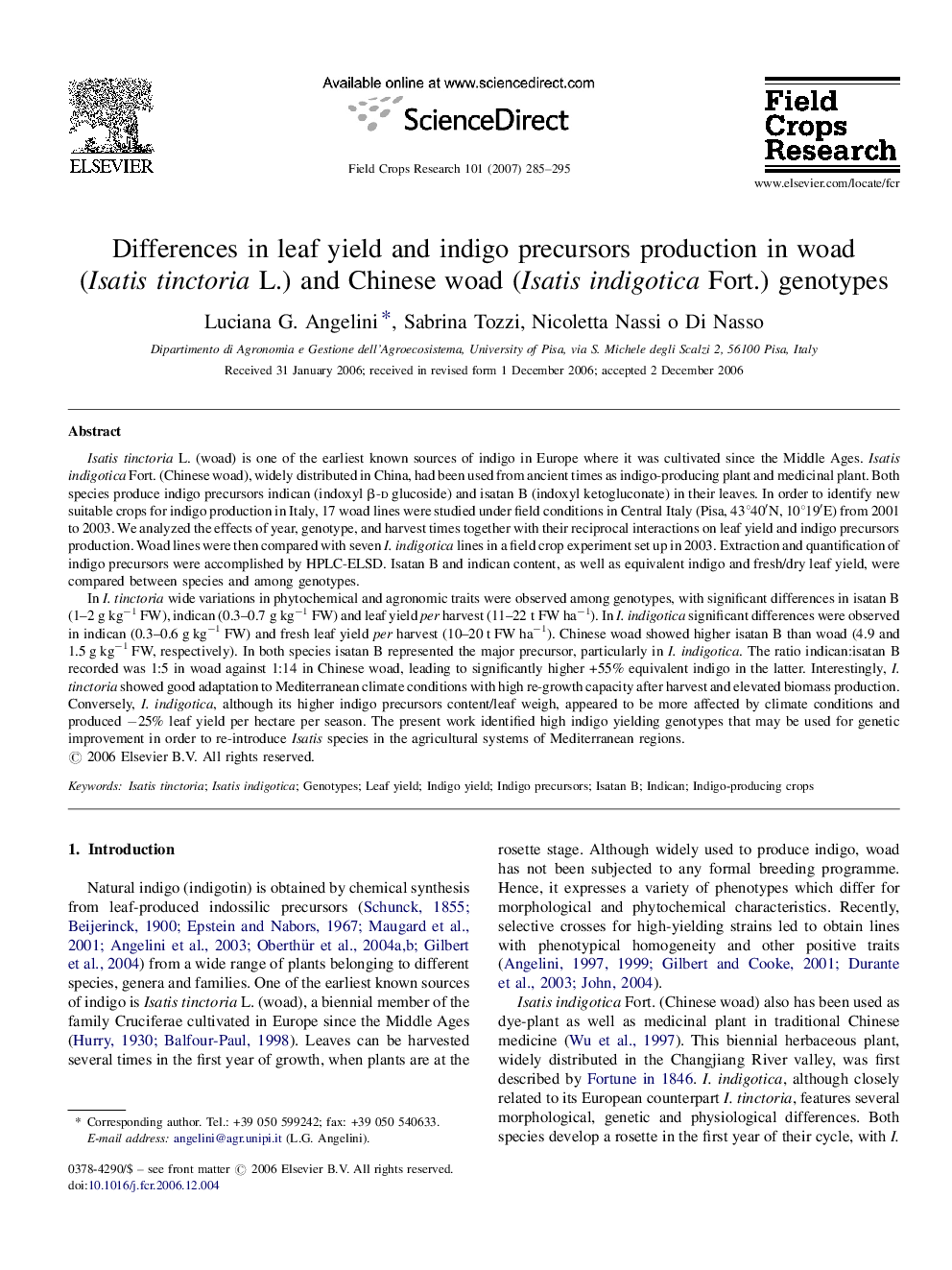| کد مقاله | کد نشریه | سال انتشار | مقاله انگلیسی | نسخه تمام متن |
|---|---|---|---|---|
| 4511448 | 1321912 | 2007 | 11 صفحه PDF | دانلود رایگان |

Isatis tinctoria L. (woad) is one of the earliest known sources of indigo in Europe where it was cultivated since the Middle Ages. Isatisindigotica Fort. (Chinese woad), widely distributed in China, had been used from ancient times as indigo-producing plant and medicinal plant. Both species produce indigo precursors indican (indoxyl β-d glucoside) and isatan B (indoxyl ketogluconate) in their leaves. In order to identify new suitable crops for indigo production in Italy, 17 woad lines were studied under field conditions in Central Italy (Pisa, 43°40′N, 10°19′E) from 2001 to 2003. We analyzed the effects of year, genotype, and harvest times together with their reciprocal interactions on leaf yield and indigo precursors production. Woad lines were then compared with seven I. indigotica lines in a field crop experiment set up in 2003. Extraction and quantification of indigo precursors were accomplished by HPLC-ELSD. Isatan B and indican content, as well as equivalent indigo and fresh/dry leaf yield, were compared between species and among genotypes.In I. tinctoria wide variations in phytochemical and agronomic traits were observed among genotypes, with significant differences in isatan B (1–2 g kg−1 FW), indican (0.3–0.7 g kg−1 FW) and leaf yield per harvest (11–22 t FW ha−1). In I. indigotica significant differences were observed in indican (0.3–0.6 g kg−1 FW) and fresh leaf yield per harvest (10–20 t FW ha−1). Chinese woad showed higher isatan B than woad (4.9 and 1.5 g kg−1 FW, respectively). In both species isatan B represented the major precursor, particularly in I. indigotica. The ratio indican:isatan B recorded was 1:5 in woad against 1:14 in Chinese woad, leading to significantly higher +55% equivalent indigo in the latter. Interestingly, I. tinctoria showed good adaptation to Mediterranean climate conditions with high re-growth capacity after harvest and elevated biomass production. Conversely, I. indigotica, although its higher indigo precursors content/leaf weigh, appeared to be more affected by climate conditions and produced −25% leaf yield per hectare per season. The present work identified high indigo yielding genotypes that may be used for genetic improvement in order to re-introduce Isatis species in the agricultural systems of Mediterranean regions.
Journal: Field Crops Research - Volume 101, Issue 3, 15 March 2007, Pages 285–295